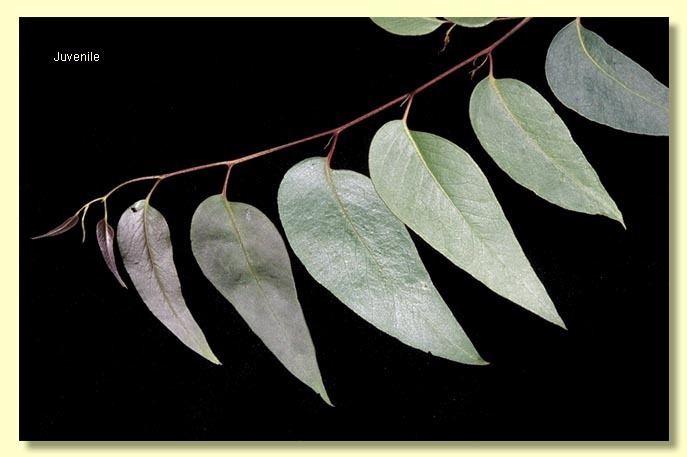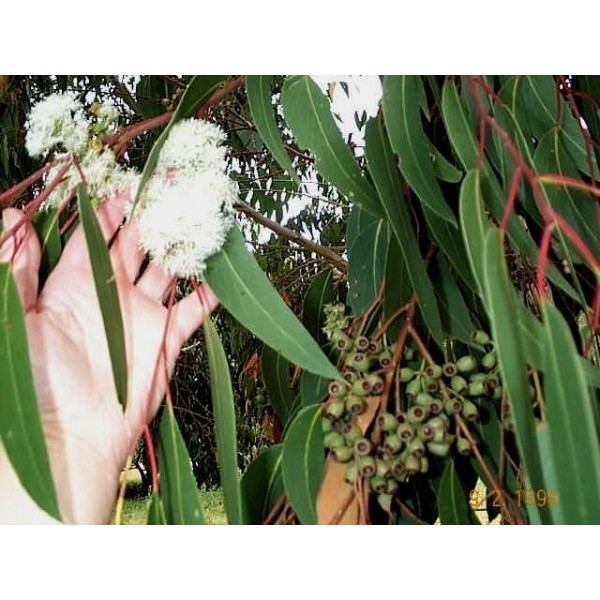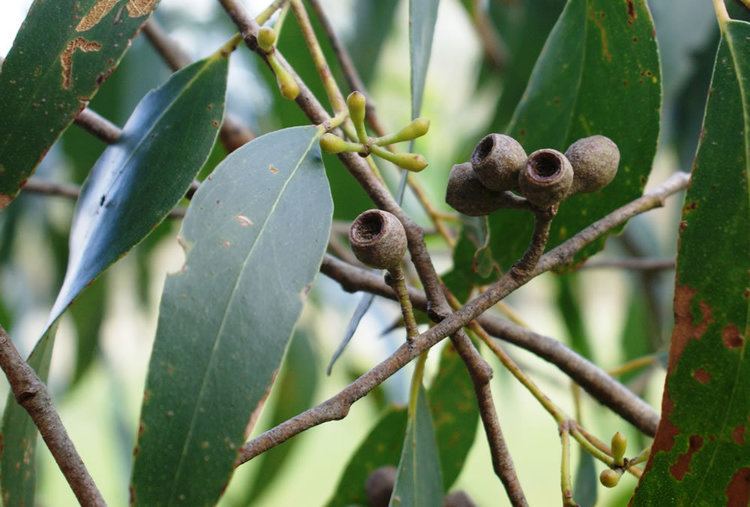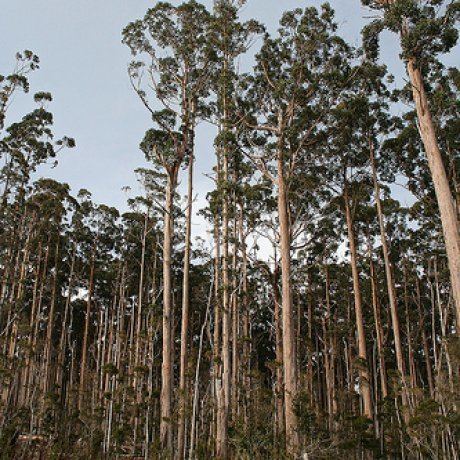Rank Species | Genus Eucalyptus Higher classification Gum trees | |
 | ||
Similar Gum trees, Eucalyptus regnans, Eucalyptus viminalis, Eucalyptus delegatensis, Eucalyptus ovata | ||
Eucalyptus obliqua, commonly known as Australian oak, brown top, brown top stringbark, messmate, messmate stringybark, stringybark and Tasmanian oak, is a hardwood tree native to south-eastern Australia.
Contents

Description

It grows as a tree up to 90 metres tall, with a trunk up to three metres in diameter. It has a lignotuber, so burnt or coppiced trees sometimes recover in mallee form. It has thick, rough, stringy bark, and glossy green leaves from six to 22 centimetres long, and 1½ to 7 centimetres wide. Inflorescences consist of seven to 15 white flowers. The fruits are barrel-shaped. Currently, the tallest known specimen is 86 m tall and located in Tasmania. Historically, qualified surveyors have documented trees up to 98.8 m (324 ft).
Taxonomy

E. obliqua has the taxonomic distinction of being the first Eucalyptus species discovered and published. It was first collected in 1777 during Cook's third expedition; the botanist David Nelson collected the specimen from Bruny Island, an island which is part of Tasmania. This specimen was sent to the British Museum in London, where it was examined by the French botanist Charles Louis L'Héritier de Brutelle. L'Héritier used it as the type species for a new genus, which he published in 1788. He named the genus Eucalyptus from the Greek eu ("good, well") and calyptos ("covered") in reference to the flower bud cap. He gave this species the name obliqua from the Latin obliquus ("oblique"), in reference to the leaf bases of unequal length. Thus the full name of the species is Eucalyptus obliqua L.Her.
The species has a great many synonyms:

Distribution and habitat

E. obliqua is widespread in cooler areas of south eastern Australia. It occurs from Kangaroo Island, through southeast South Australia, throughout Victoria and Tasmania, mainly east of the tablelands in New South Wales, with a few populations extending into southern Queensland. Thus the overall range of latitude is 28–43½°S. It occurs from sea level up to elevations of 1475 metres in the Northern Tablelands of New South Wales. The climate is humid or subhumid, with temperatures ranging from cool to warm, and annual rainfall ranging from 500 to 2400 millimetres. Severe winter frosts are common, severe drought extremely uncommon.

It occurs on a wide range of soils in hilly or mountainous areas. In cool mountainous areas it forms tall open-forest with other Eucalyptus species such as E. fastigata (brown barrel), E. nitens (shining gum), E. cypellocarpa (mountain grey gum), E. viminalis (manna gum) and E. delegatensis (alpine ash).
Uses
One of the most important Australian hardwoods, E. obliqua is often sold with E. regnans (Mountain Ash) as "Vic Ash" or "Tasmanian oak". It is slightly denser that E. regnans - estimates of density range from 720 kg/m3 to 830 kg/m3 - and harder too. The sapwood is pale brown, the heartwood light brown. It has an even texture, with straight grains sometimes interlocked, and well-defined rings. Gum veins are common.
The timber has moderate hardness and strength, but low durability. It splits easily, and is easily worked, glued and stained; it is also suitable for steam bending. It is mostly used for pulp production and for construction and manufacture, especially in house building, joinery, flooring, and furniture.
